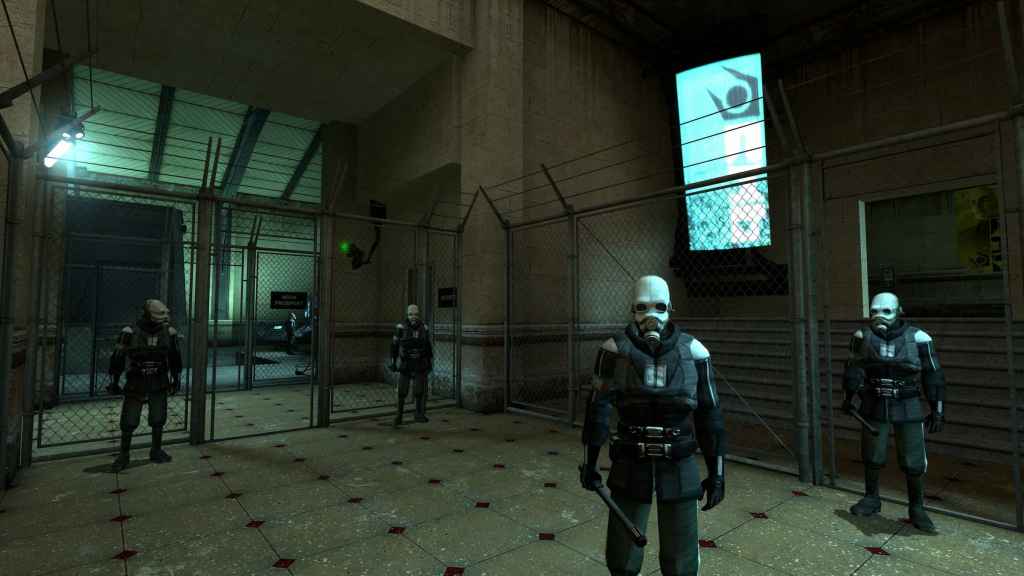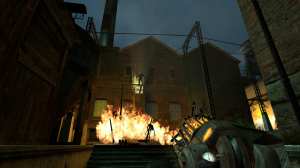Video games have always thrived on the tension between narrative and player expectation. While some stories reach satisfying conclusions, many others leave players hanging on cliffhangers that ignite endless speculation about what could possibly happen next. These moments can transform a game from a simple entertainment experience into a cultural phenomenon. Players are left pondering what comes next, and in the absence of closure, these stories linger in our minds for years, sometimes decades.
Videos by ComicBook.com
And yet, some of the most grueling cliffhangers are destined never to be resolved. Shifts in studio priorities, evolving technology, and changing market pressures can leave even the most beloved stories unfinished. Unfortunately, there are games whose narratives stop at a turning point, leaving players with lingering questions and worlds frozen in time. These unresolved stories are part of what makes their legends endure.
3. Half-Life 2: Episode Two

Valve’s Half-Life 2: Episode Two (and Half-Life 2 by extension) is one of gaming’s most infamous unfinished stories. The game ends with the death of Eli Vance, leaving you desperate to see how Gordon Freeman’s journey would continue. Despite the enormous fan demand, Valve has never committed to an official sequel. Part of this comes down to Valve’s track record. The company notoriously takes its time between major releases. For example, there was a six-year wait between Half-Life 1 and Half-Life 2, and between the episodic stretch of Episode One and Episode Two, it’s clear that Valve has always prioritized internal motivation over rushing to meet fan expectations.
Another reason a sequel may never happen lies in the changing market and technological landscape. When Episode Two was released in 2007, episodic content was a viable release strategy. Today, AAA games are massive stand-alone projects, and episodic content, while still present, is far less common. We’re more likely to see a Half-Life 3 rather than a direct sequel to Episode 2. Moreover, Valve’s focus has shifted toward new technologies such as virtual reality (VR). Half-Life: Alyx, released in 2020, serves as a prequel and demonstrates the company’s commitment to innovation rather than simply continuing an existing story due to outcry. Even with astronomical industry pressure, Valve staff have remained deliberately vague on a mainline continuation or a new episodic release. While they aren’t exactly impossible, when they could happen is anyone’s guess, if at all.
Despite the lack of resolution, Half-Life 2 and its episodic sequels are legendary. They set benchmarks in narrative-driven first-person shooters, combining storytelling, physics-based gameplay, and world design that influenced an entire generation of developers. Even without a resolution to its cliffhanger, the series’ impact on gaming is undeniable. Its frozen narrative only adds to its mystique, making Episode Two a legendary cliffhanger in gaming history.
2. Metal Gear Solid V: The Phantom Pain

Metal Gear Solid V: The Phantom Pain concluded with one of the most compelling yet incomplete narratives in modern gaming. The story ends abruptly, with key plot points totally unresolved, and the final chapter, Mission 51, was never released. Hideo Kojima’s fallout with Konami left the game’s conclusion incomplete and, as a result, inaccessible to the public. Since the falling out, the studio has moved on to other projects, leaving the story of Big Boss unfinished. Fans are left to piece together the intended narrative through speculation, interviews, and vague gameplay hints.
Due to these notable unique circumstances, getting a sequel to the story is almost entirely impossible and extremely unlikely, less likely than getting a Half-Life 3, at this point. Konami no longer collaborates with Kojima, who retains ownership of the intellectual and creative vision for the series. However, without the creative mind behind the legendary franchise, it’s obvious that Konami has moved on to more accessible projects. The fallout is also evident in the gameplay itself. The entire second half of the game comes across as unfinished and repetitive, with extended grind sections that were likely a result of the rushed development caused by the creative split. Even fan demand, while enormous, cannot bridge the corporate and creative gap required to resolve the cliffhanger. The logistical and legal barriers effectively lock the story in place.
Despite its incomplete second half, Metal Gear Solid V received strong positive reception as it was a high-quality game beyond its weak points. Its open-world design, cinematic stealth mechanics, and complex narrative earned it critical acclaim and a place among the most influential games of its generation. The cliffhanger ending, combined with the unfinished sections, has become part of the mystique that elevates the game to legendary status. It is remembered as a masterpiece that was never fully realized.
1. Mass Effect: Andromeda

Mass Effect: Andromeda is unique on this list as it is not a mainline entry of its legendary predecessors. Instead, it expanded the beloved sci-fi franchise into a new galaxy, introducing you to the Andromeda Initiative and a host of unexplored alien civilizations. Narratively, it took place between the events of Mass Effect 2 and Mass Effect 3. Even so, the game’s ending left multiple mysteries unresolved, including the fate of the Initiative, the ongoing threat of the Kett, and the secrets of the Remnant. BioWare and EA’s lack of a follow-up makes a proper sequel highly improbable, leaving the story suspended and fans yearning for answers that may never come.
Several factors make a sequel extremely unlikely. Andromeda received a mixed reception at launch, thanks in part to the numerous bugs that gave the impression that the game was rushed to completion. The resulting impressions dampened enthusiasm for a direct continuation. EA has since focused on remastering the original trilogy and exploring other projects, reducing the likelihood of revisiting Andromeda’s unfinished narrative. Furthermore, planned DLCs that would likely have explained major story points, including what happened to the other Arks, were canceled, leaving some of the game’s biggest mysteries permanently unresolved.
Yet despite these factors, Mass Effect: Andromeda did succeed in expanding the Mass Effect universe in a big way by introducing new systems and memorable characters. Its ambition and scale demonstrate the franchise’s enduring appeal, even if the cliffhanger is unlikely ever to be addressed. The unresolved threads contribute to its mystique, leaving fans to imagine the possibilities and cementing its place as a notable and legendary entry in the series.
What do you think? Leave a comment below and join the conversation now in the ComicBook Forum!









